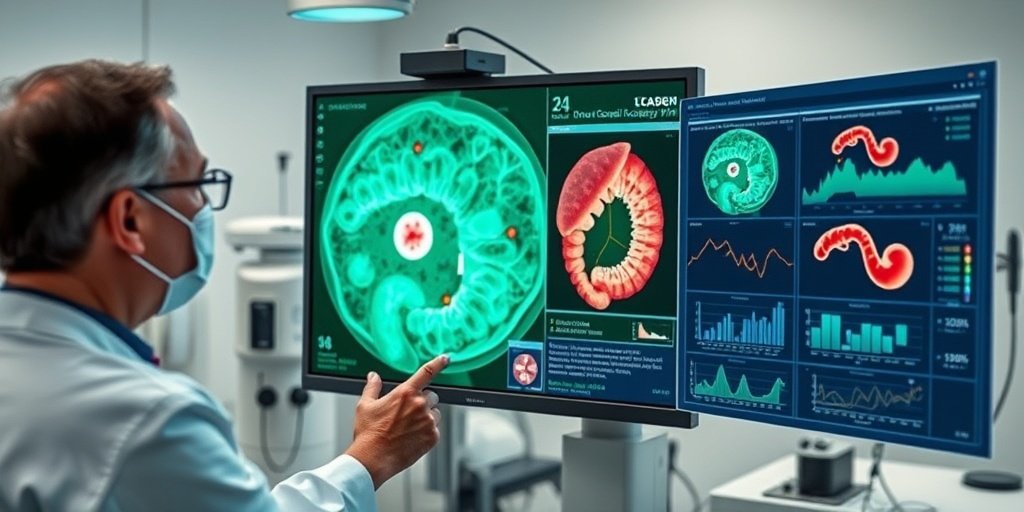Overview
Recent research indicates that artificial intelligence (AI) has matched or even surpassed the capabilities of gastroenterologists in assessing colonoscopy results for patients with Crohn’s disease. The findings were published in Clinical Gastroenterology and Hepatology.
Key Findings
- The AI model demonstrated accuracy in identifying mucosal ulceration comparable to that of physicians reviewing endoscopic videos.
- Results showed a strong correlation with the Simple Endoscopic Score for Crohn’s Disease (SES-CD), a common scoring system used in clinical evaluations.
- Two gastroenterologists annotated ulcer areas in 4,487 images from endoscopic videos, which the AI model subsequently analyzed.
- The AI achieved a higher overall DICE similarity score of 0.591 compared to the agreement between the two gastroenterologists.
Implications for Clinical Practice
Dr. Ryan W. Stidham, a senior author of the study, emphasized the limitations of traditional manual tools in providing objective assessments. He stated:
“AI image analysis can provide better solutions for more precise measurements and descriptions of what we are seeing on the screen during colonoscopy.”
AI’s potential to enhance consistency in evaluations could lead to:
- Improved treatment decisions in areas lacking IBD specialists.
- Better understanding of decision-making processes for experienced providers.
- Enhanced educational tools and drug development strategies.
Future Directions
Researchers believe that AI-powered metrics could offer more detailed and quantitative descriptions of Crohn’s disease, which is crucial for justifying treatment decisions, especially when expensive or risky therapies are involved. Dr. Stidham noted:
“This paper is really the first step, and I hope that it gets the entire field thinking of better ways to quantify IBD that more completely describe an individual patient.”
As AI continues to evolve, it may play a significant role in the future of automated care, working alongside healthcare professionals to improve patient outcomes.
